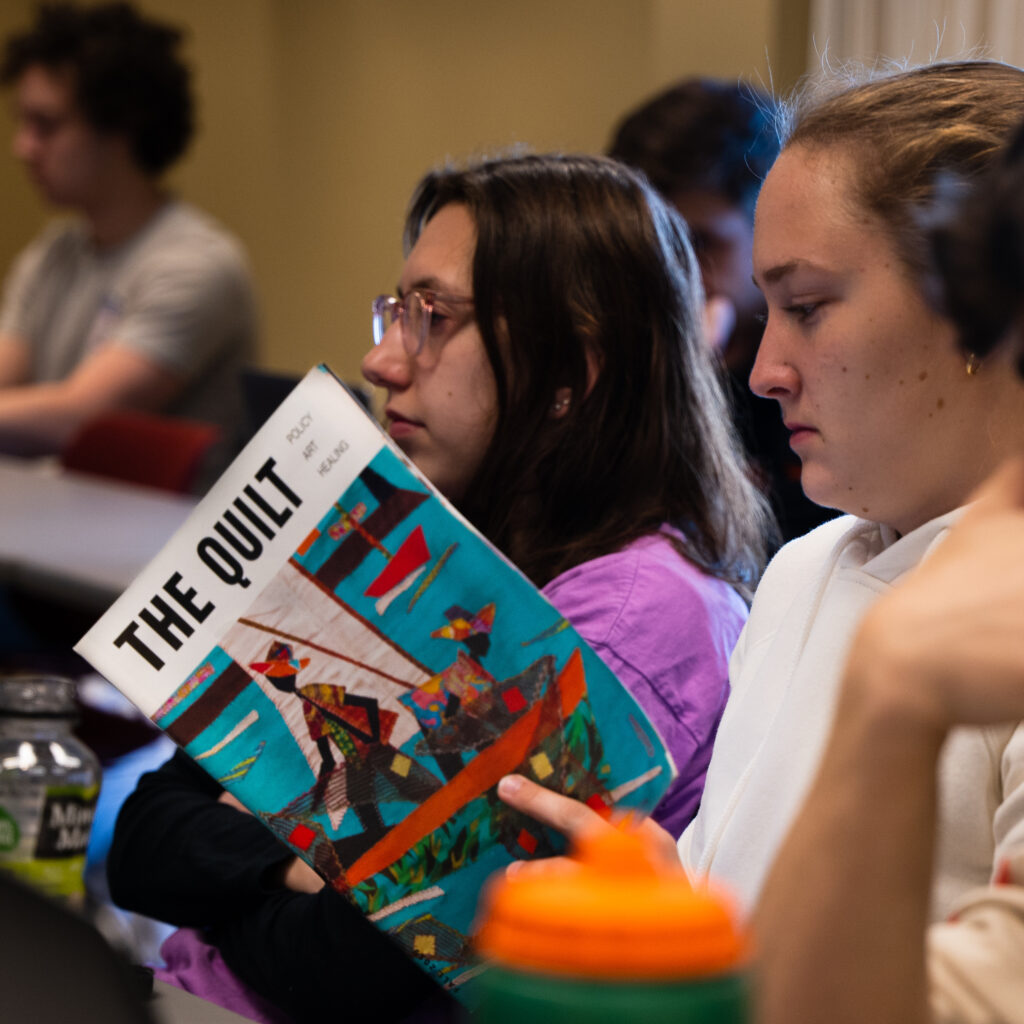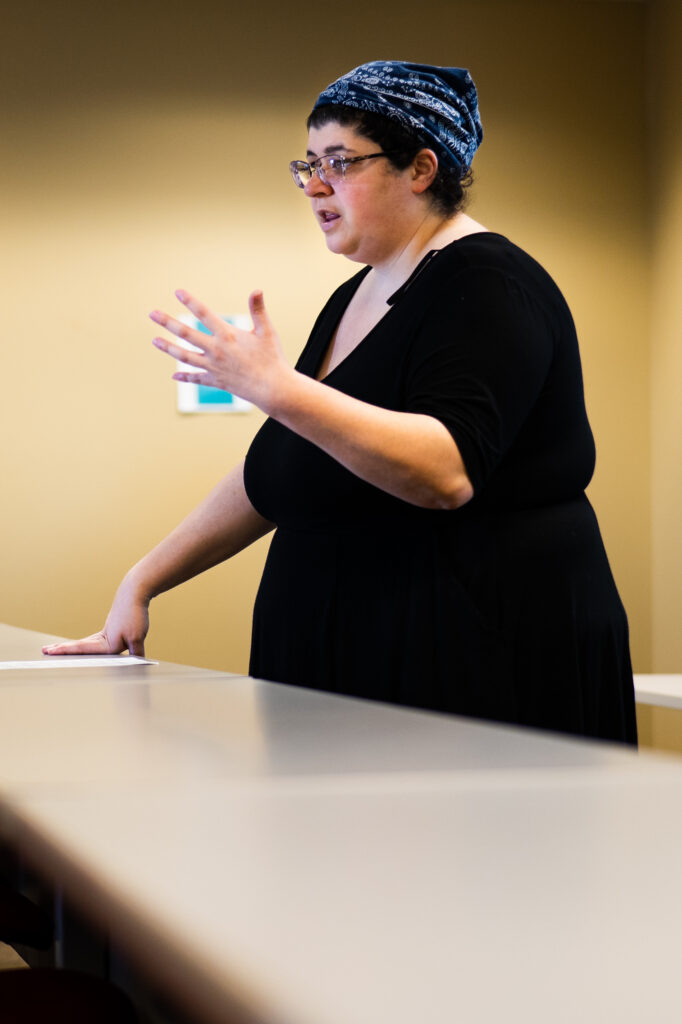
By Catherine Kane ’26 | Photos by John Schoolmeesters
“We look at how mainstream commercial media is failing people and how concerned and inventive people are attempting to fill that gap.” —Michael Griffin
Media and cultural studies professor Michael Griffin has had to revamp his Local News Media Institutions course several times over the years—and Griffin likes it that way.
“Not only has the role of the newspaper changed,” he says, “but the idea of news itself is no longer the same.”
He began teaching a “Local Media Institutions ancestor” twenty years ago, then called Media Institutions. Initially, it was a course that examined the public’s relationship with news industries and the economics of journalism. Now, it’s morphed into a class on local news and community media. At the start of the class, he asks his students where they get their news.
“Typically, they list off various social media platforms or large commercial media companies,” Griffin says.

But even with heavy internet exposure students, he says, still have large “internet blindspots.” Mergers and acquisitions have created a media landscape dominated by a few major conglomerates, and students often are not aware of where their news information actually originates, or by what means it travels to them. This is an issue they explore in depth in the course.
“We look at how mainstream commercial media is failing people and how concerned and inventive people are attempting to fill that gap,” he says.
Griffin draws on the wealth of local news organizations and community media in the Twin Cities to show how local media can address the failings of corporate media in real time. He invites guest speakers from public and community media outlets to speak to the class about their work and the challenges of non-profit journalism. One recent speaker was Estelle Timar-Wilcox, a Macalester Class of 2022 graduate and journalist with the Saint Paul Neighborhood Network and Minnesota Public Radio. Another was Mukhtar Ibrahim, founder and editor of Sahan Journal.
For their final projects, the students engage with a local media organization in the Twin Cities. They are tasked with interviewing staff and audience members of the outlet and presenting their findings to their peers. He says that by having students do their own research on local publications, community radio stations, and neighborhood cultural centers they will have a more nuanced understanding of the contemporary media landscape, especially in the digital space. “The web offers great new opportunities in this regard, but must be viewed in a critical context,” says Griffin.
“I want to show them the difference between just using the web and really exploring the web.”

April 11 2023
Back to top




